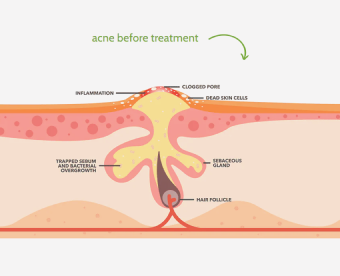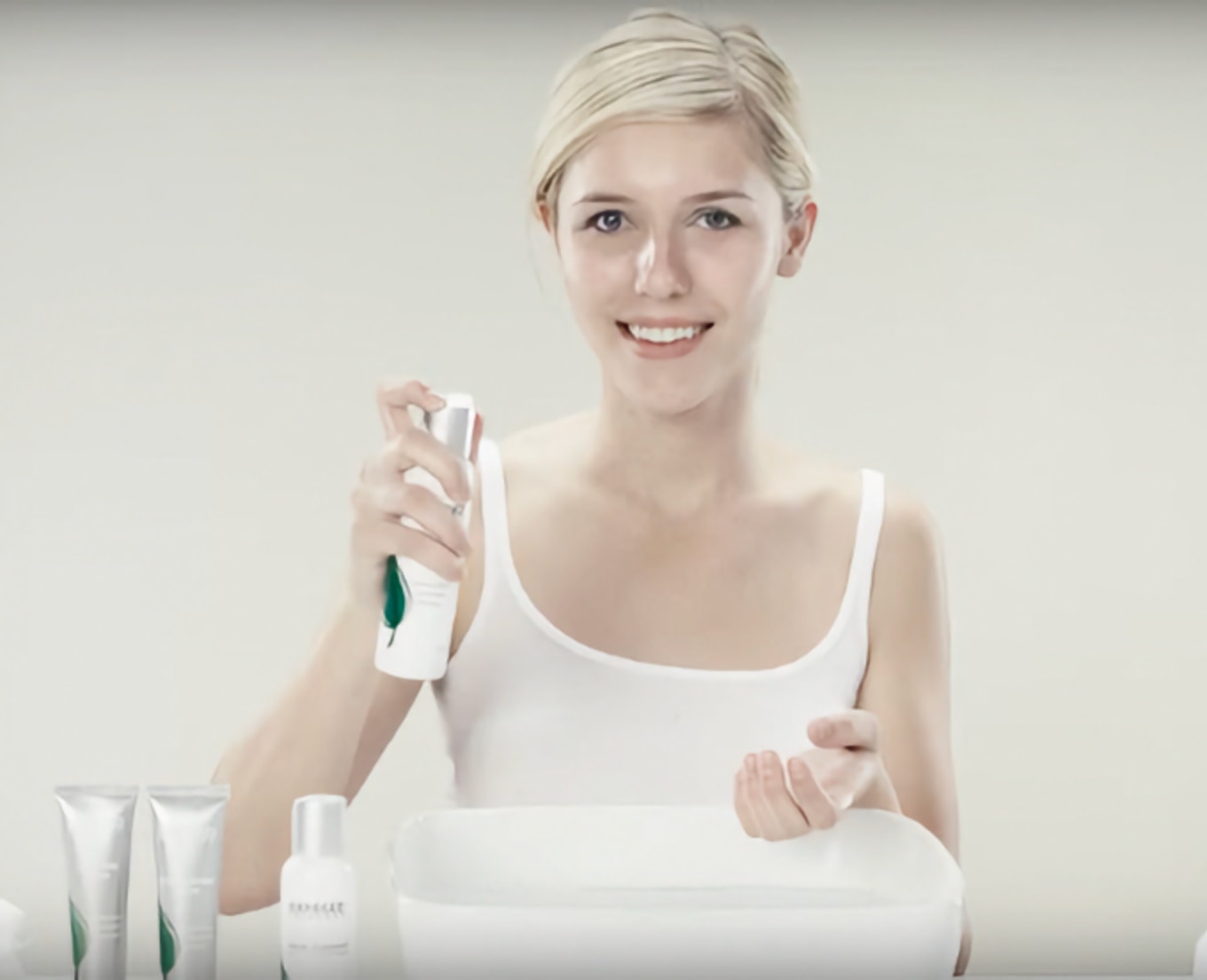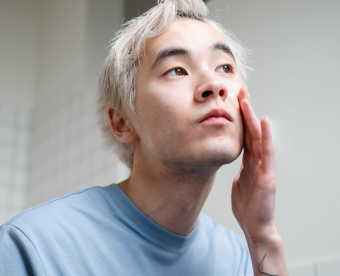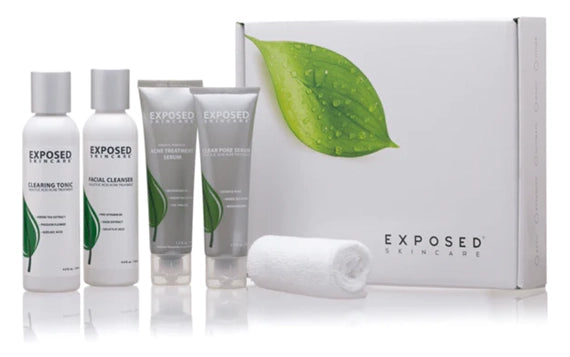When it comes to acne treatment, there's no shortage of options. From over-the-counter creams and lotions to prescription medications, the range is vast. Among these treatments, one popular option that has made waves is amoxicillin, an antibiotic traditionally used for infections.
The use of amoxicillin for acne has been a subject of much debate, with many considering it an effective way to treat severe breakouts. However, peeling back the layers and understanding why amoxicillin might not be the magic bullet for acne is crucial. Here are five reasons why using amoxicillin for acne might be bad.
Also read: How to choose the best acne treatment
Biggest Take-Aways:
-
Amoxicillin, though an antibiotic, is not the first choice for acne treatment due to its potential to cause antibiotic resistance, limited effectiveness against acne, and lack of comprehensive research supporting its use.
-
Alternative treatments, such as topical treatments, oral antibiotics, and hormonal treatments, may offer more effective solutions for treating acne.
-
While amoxicillin can be used in some instances, it should be part of a comprehensive treatment plan and is typically only used when patients can't take other more effective antibiotics.
-
Exposed Skin Care provides a comprehensive, long-term solution for managing acne and offers a less risky alternative to antibiotics like amoxicillin.

Understanding Amoxicillin and its Traditional Uses
Amoxicillin is an antibiotic that falls under the penicillin class of antibiotics. It's commonly prescribed for bacterial infections such as ear, throat, and urinary tract infections. The drug works by inhibiting the growth of bacteria, thereby aiding the immune system in its fight against the infection.
However, amoxicillin is not traditionally used to treat acne. Acne is generally treated with a combination of topical treatments like benzoyl peroxide, topical retinoids, and in cases of severe acne, a specific class of oral antibiotics such as tetracycline, minocycline, doxycycline, and sarecycline. These antibiotics are primarily used because of their anti-inflammatory properties that can help treat inflammatory acne effectively.
So, why then is amoxicillin being used for acne, and why might it be a bad idea? Let's delve deeper.
Amoxicillin For Acne: Five Reasons Why It Might Be A Bad Idea
1. Potential For Antibiotic Resistance
The usage of antibiotics like amoxicillin can lead to antibiotic resistance. When used over an extended period, bacteria can mutate and develop resistance to the antibiotic.
This makes the antibiotic less effective over time, leaving the body more vulnerable to severe infections that may no longer respond to treatment. With acne being a chronic condition requiring long-term treatment, the potential for developing resistance when using amoxicillin for acne is high.
2. Limited Effectiveness For Acne
While amoxicillin has proven effective against bacterial infections, its impact on acne isn't as potent. Acne vulgaris, the most common form of acne, is a multifactorial condition caused by factors such as excess sebum production, hormonal imbalance, and bacterial overgrowth.
Although amoxicillin can help reduce the bacterial aspect of acne, it does little to address the other causes. Therefore, its effectiveness as an acne treatment is limited compared to treatments that target multiple causes of acne.
3. Potential Side Effects
Like any other medication, amoxicillin comes with potential side effects. Common side effects of amoxicillin include diarrhea, nausea, vomiting, and allergic reactions. In the context of acne treatment, these side effects may outweigh the benefits, especially given the limited effectiveness of amoxicillin for acne.

4. Not A First-Line Treatment
In the medical world, amoxicillin is not considered a first-line treatment for acne. Dermatologists commonly prescribe antibiotics like tetracycline, doxycycline, minocycline, and sarecycline for treating moderate to severe acne, while topical retinoids and benzoyl peroxide are used for mild acne.
Amoxicillin may only be used as a second-line treatment, primarily in cases where patients can't take tetracyclines. Therefore, using amoxicillin as a go-to treatment for acne isn't aligned with typical medical practices.
5. Lack Of Comprehensive Research
Despite its widespread use, comprehensive research supporting the effectiveness of amoxicillin for acne is lacking. While some anecdotal evidence suggests it may help in certain cases, it doesn't replace the wealth of scientific evidence backing the use of other topical and oral antibiotics for acne.
Better Alternatives To Amoxicillin For Acne Treatment
While amoxicillin may seem like an attractive option due to its availability and potential effects, considering the aforementioned reasons, it might not be the best option. Here are a few other acne treatments that may offer better results.
-
Topical treatments: Over-the-counter options like benzoyl peroxide and salicylic acid are great for mild to moderate acne. Prescription treatments like topical retinoids can also help manage acne by promoting skin cell turnover.

-
Oral antibiotics: Tetracycline, doxycycline, minocycline, and sarecycline are commonly prescribed oral antibiotics for severe acne. They help reduce inflammation and control the bacterial aspect of acne.
-
Hormonal treatments: In some cases, hormonal imbalance might be the primary cause of acne. Hormonal treatments can help balance hormone levels and manage acne.
Pros and Cons of Amoxicillin for Acne
While taking amoxicillin for acne, it's essential to understand the benefits and potential downsides. Here's a brief overview:
Benefits of Amoxicillin for Acne:
- Antibacterial properties: Amoxicillin can help reduce the bacterial component of acne.
- Systemic antibiotic: For acne that isn't responding to topical treatments, systemic antibiotics like amoxicillin can offer some relief.
Potential Downsides of Using Amoxicillin:
- Limited Scope: It does not address other acne causes, such as hormonal imbalances or excessive sebum production.
- Side Effects: Taking amoxicillin can lead to side effects, including nausea, diarrhea, and potential allergic reactions.
- Antibiotic Resistance: Prolonged use can lead to antibiotic resistance, making future bacterial infections more difficult to treat.

Risk Factors of Taking Amoxicillin for Acne
Like any medication, using amoxicillin for acne comes with its risks. For example, taking amoxicillin may cause potential side effects like allergic reactions, digestive issues, and possible risk of liver damage, especially with alcohol use while on amoxicillin. Besides, the more antibiotics are used, the higher the risk of developing antibiotic resistance, making them less effective over time.
Additionally, the dosage of amoxicillin should be strictly adhered to as directed by healthcare providers. A too-high dose can amplify side effects, while a too-low dose might not be as effective and can also contribute to antibiotic resistance.
In conclusion, while amoxicillin is used to treat various bacterial infections, its role in acne treatment is limited and should be considered carefully. More effective and less risky treatments, such as topical retinoids and benzoyl peroxide, hormonal treatments, and tetracycline class antibiotics like doxycycline and minocycline, should be explored before considering amoxicillin for acne.
The Benefits of Using Exposed Skin Care for Acne Management
Exposed Skin Care is a renowned skincare line with products specifically designed to help treat acne, from whiteheads to more severe inflammatory acne.
The line's appeal lies not only in its effectiveness but also in its approach to acne management. Here are a few notable benefits:
-
Comprehensive Treatment: Unlike a topical antibiotic prescribed for acne, Exposed Skin Care offers a complete system. It targets acne at all stages, from preventing clogged hair follicles that can lead to whiteheads to treating existing cysts and inflammations.
-
Less Risk of Bacterial Resistance: Overusing antibiotics can lead to bacterial resistance, making treatments less effective over time. In contrast, Exposed Skin Care, which uses a combination of scientifically-backed natural ingredients and proven acne medications, poses a lower risk for developing resistance.
-
Long-term Results: While antibiotic treatment for acne often shows noticeable improvement within three to four months, these effects can taper off if the antibiotics cease to work due to bacterial resistance. However, with regular use, Exposed Skin Care can yield long-lasting results, making it a viable choice for ongoing acne management.
In conclusion, Exposed Skin Care provides a comprehensive, long-term solution for managing acne, from mild cases to moderate to severe inflammatory acne, and is commonly used to treat acne as well.
Conclusion
Although amoxicillin is a recognized antibiotic, its use as a front-line treatment for acne is not generally advocated due to its potential for antibiotic resistance, limited scope in tackling different aspects of acne, and various potential side effects. Moreover, the lack of comprehensive scientific research supporting the use of amoxicillin for acne further raises questions about its efficacy.
Instead, the use of more targeted treatments such as topical applications, specialized oral antibiotics, hormonal treatments, and comprehensive skincare lines like Exposed Skin Care are more commonly advised. Specifically, products like Exposed Skin Care can offer a holistic, long-term solution that tackles different aspects of acne, reducing the need for antibiotics like amoxicillin.
Therefore, while amoxicillin can have a place in the arsenal against acne in some instances, its broad-spectrum use for this purpose is less suitable. It's crucial to consider more reliable, safer, and comprehensive alternatives for managing this multifaceted skin condition effectively.
Frequently Asked Questions
1. Can amoxicillin treat severe acne?
While amoxicillin may be used in certain cases of severe acne, it's typically not the first choice of treatment. Other antibiotics, such as tetracycline, doxycycline, minocycline, and sarecycline are more commonly used.
2. Why is amoxicillin not the first choice for treating acne?
Amoxicillin is not the first choice due to its potential for antibiotic resistance, its limited effectiveness for treating acne, possible side effects, and the lack of comprehensive research supporting its use.
3. Can amoxicillin cause side effects?
Like any medication, amoxicillin can cause side effects, including diarrhea, nausea, vomiting, and allergic reactions.
4. Are there better alternatives to amoxicillin for treating acne?
Treatments such as topical retinoids, benzoyl peroxide, oral antibiotics (tetracycline, doxycycline, minocycline, and sarecycline), and hormonal treatments may offer more effective solutions for acne.
5. What causes acne?
Acne is caused by a combination of factors, including excess sebum production, hormonal imbalances, bacterial overgrowth, and inflammation. The exact cause can vary from person to person.


















